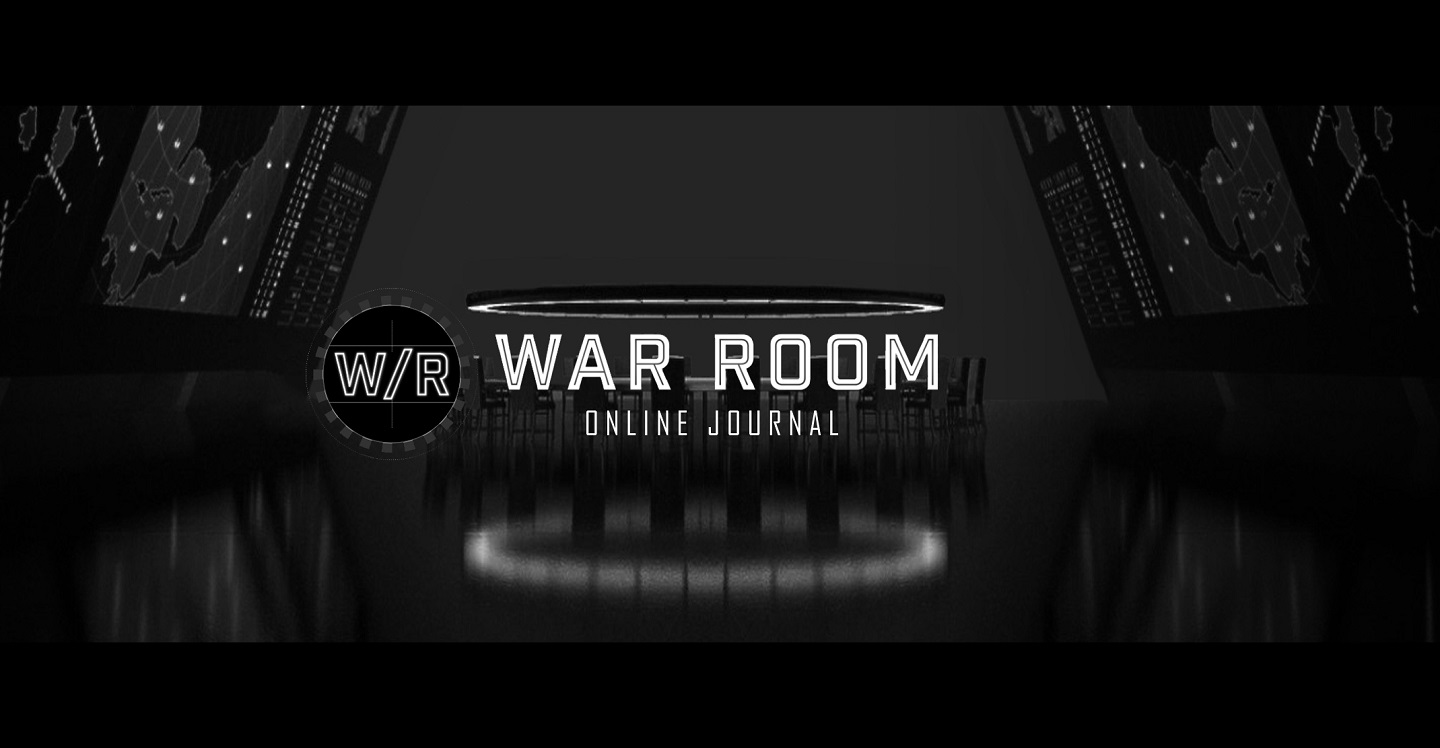
WAR ROOM is proud to be your one-stop shop all of the finest reference materials produced by the incredible minds of the faculty and staff of the U.S. Army War College. All items linked below will be updated as soon as new or revised versions are made available. All document are provided free of charge and instructions to obtain printed copies can typically be found inside the front cover of each document.
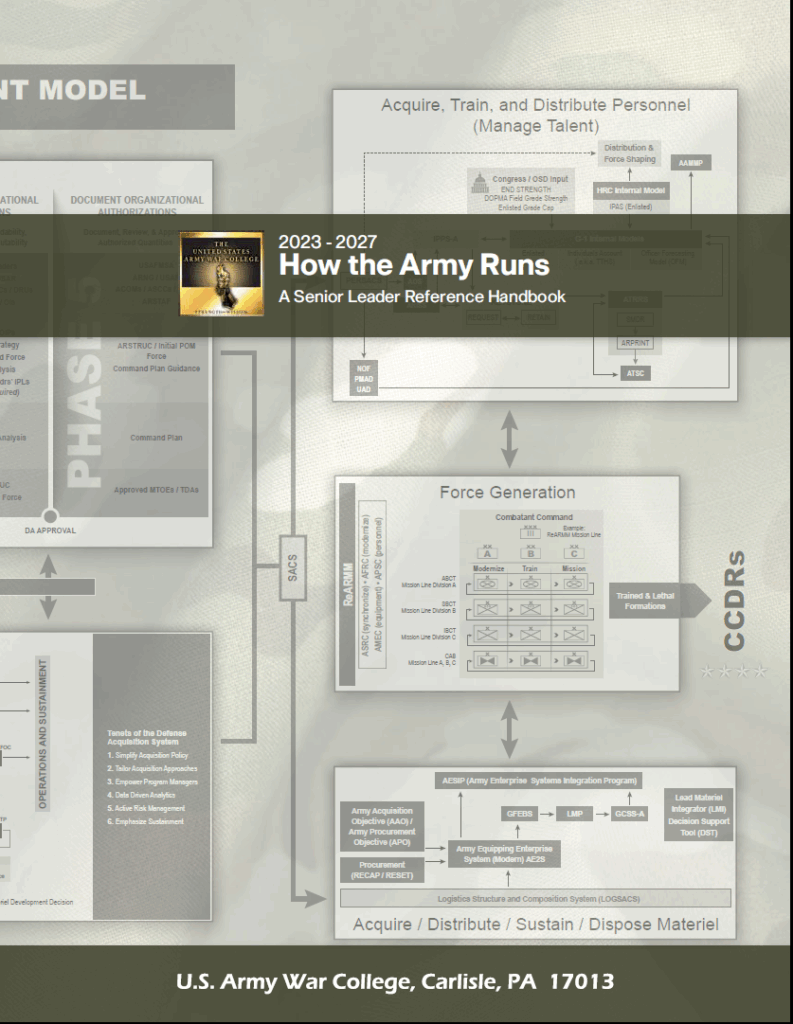
Since the publication of the 2021-2022 How the Army Runs Reference Manual, the U.S. Army’s pace has quickened as it organizes its concepts, doctrine and capabilities to deploy, fight and win against a great power in large scale combat operations (LSCO). With the Russian invasion of Ukraine in 2022 and the ongoing conflict, to the Israel-Hamas-Hezbollah conflict in the Middle East, to the persistent competition between the United States and its allies with China in the western Pacific, the Army’s mission to deter enemies with steadfast vigilance and development and maintenance of critical relevant capabilities has never been more important. How the Army Runs 2023-2027 details the current organization, systems and processes the Army uses to develop and employ combat ready formations as part of the Joint Force for use by Combatant Commanders to successfully execute the nation’s security strategy.
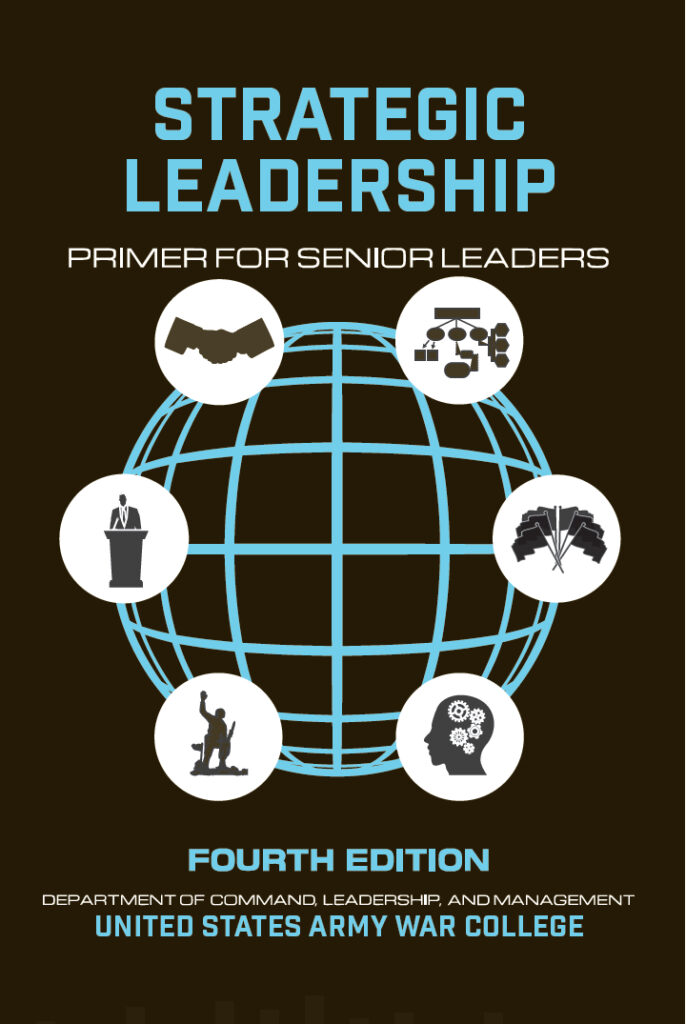
STRATEGIC LEADERSHIP: PRIMER FOR SENIOR LEADERS (4th Edition)
Strategic leadership is “the process of aligning people, systems, and resources to achieve a vision for the enterprise while enabling an adaptive and innovative culture necessary to gain an advantage in the competitive environment.” To succeed at the strategic level, leaders must: (1) understand the breadth, scope, and complexity of the environment in which they operate; (2) appreciate the magnitude of the potential costs of their decisions; (3) leverage senior leadership teams, and (4) operate as stewards of the profession, embracing both their responsibilities to lead the profession and manage the profession’s bureaucratic arm. This Primer provides insights on leadership at the strategic level; the competitive external and internal environments of large organizations; senior leader roles, competencies, and character; and how to develop senior leaders.
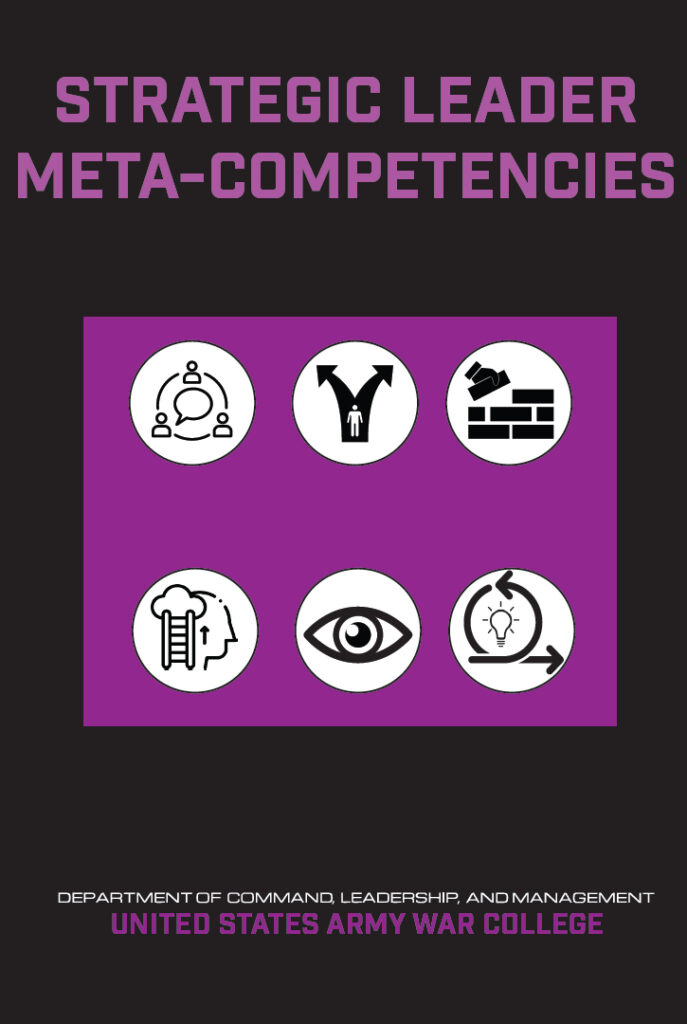
STRATEGIC LEADER META-COMPETENCIES
Prepared by a group of U.S. Army War College students under faculty supervision in support of the Army Talent Management Task Force in academic year 2021. Talent management at the strategic level demands a common understanding of strategic leader capability. After analyzing more than 100 strategic leadership competencies found in over 100 source documents, this report presents a meta-competency framework describing the essence of strategic leadership capability. The six meta-competencies presented provide a common understanding of strategic talent requirements that can inform future Army doctrine.
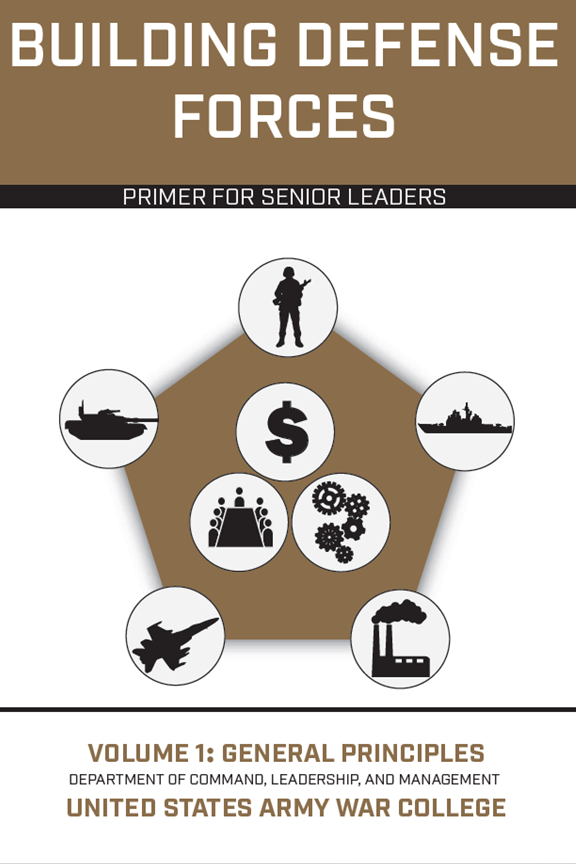
BUILDING DEFENSE FORCES: PRIMER FOR SENIOR LEADERS, VOLUME I: GENERAL PRINCIPLES
The Building Defense Forces Primer is a two-volume set that replaces the Defense Management Primer. Volume I is a handbook of topics relevant for any defense force regardless of organization and covers the roles and missions of the defense enterprise, major strategic choices such as readiness vs. modernization vs. force structure, handing and distribution of resources such as funding and people, the major levers available for defense enterprise leaders to exercise change (measures of performance, decision support systems, and programmatic tools), and the challenges of being a leader at the defense enterprise level. Volume II is forthcoming and will cover some of the unique aspects of the U.S. defense enterprise from a more theoretical perspective than seen in the How the Army Runs reference guide.
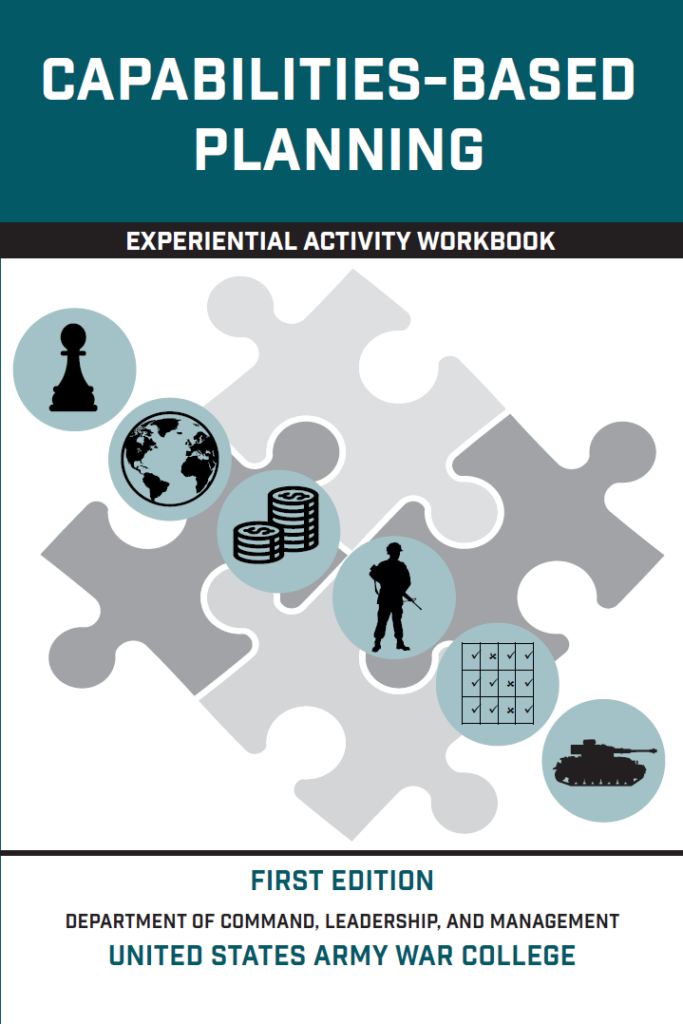
CAPABILITIES-BASED PLANNING: EXPERIENTIAL ACTIVITY WORKBOOK
This workbook emerged out of a request for assistance that the United States Army War College received following bi-lateral staff talks between an Army service component command and a partner nation’s Army. The request was for a workshop for the partner Army’s staff planners on capabilities-based planning in support of that Army’s on-going transformation efforts. This workbook is a result of that effort — combining capabilities-based planning methods employed in both US and international militaries for general use. It includes seven activities that one can use for conducting planning and communicating the results: (1) Describing the Current Situation; (2) Developing Operating Concepts; (3) Developing Scenarios to Test the Concepts; (4) Testing the Concepts; (5) Determining Requirements; (6) Building a Force Development Plan; and (7) Developing the Communications Campaign.
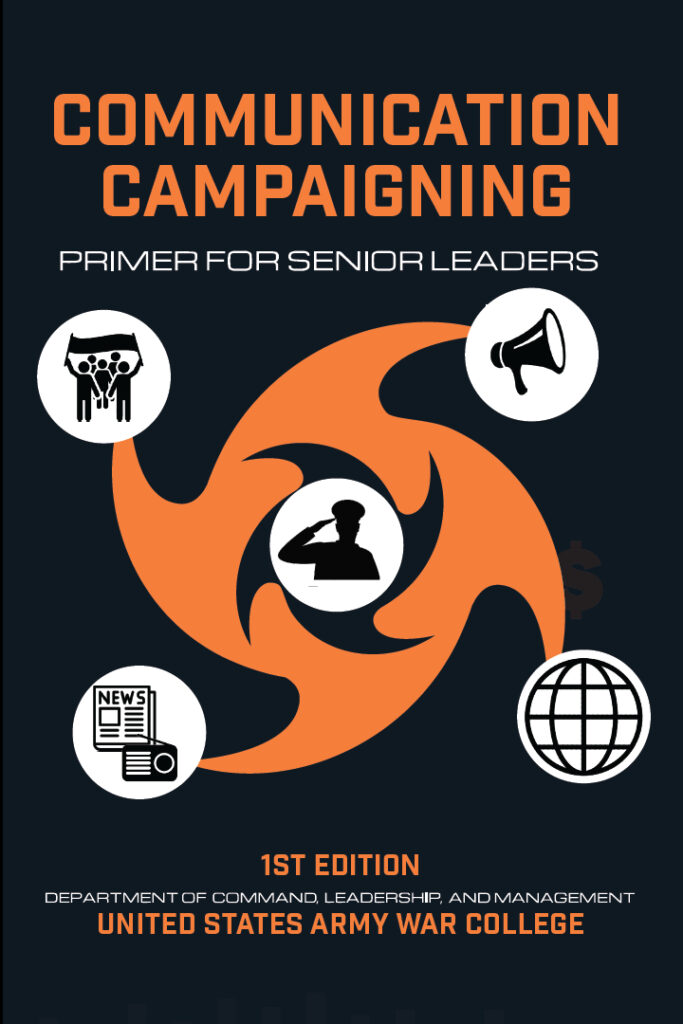
COMMUNICATION CAMPAIGNING: PRIMER FOR SENIOR LEADERS (1st Edition)
Strategic communication is both an art and a science, a malleable hybrid process that makes achieving consensus on the best organizational approach to a communications campaign difficult to achieve. Too often, national and military leaders favor the science, and deliver messages that are rational in their construction but uninspiring to stakeholders and members of the organization alike. But too much artistry is also a problem. If the message is not grounded in the identity of the organization, it fails to be authentic or motivating. To this point, there has been little that guides leaders how to integrate the art and science into campaign development. This primer points the way, to mastering the science so that the art can then be applied with a judicious and skillful hand.
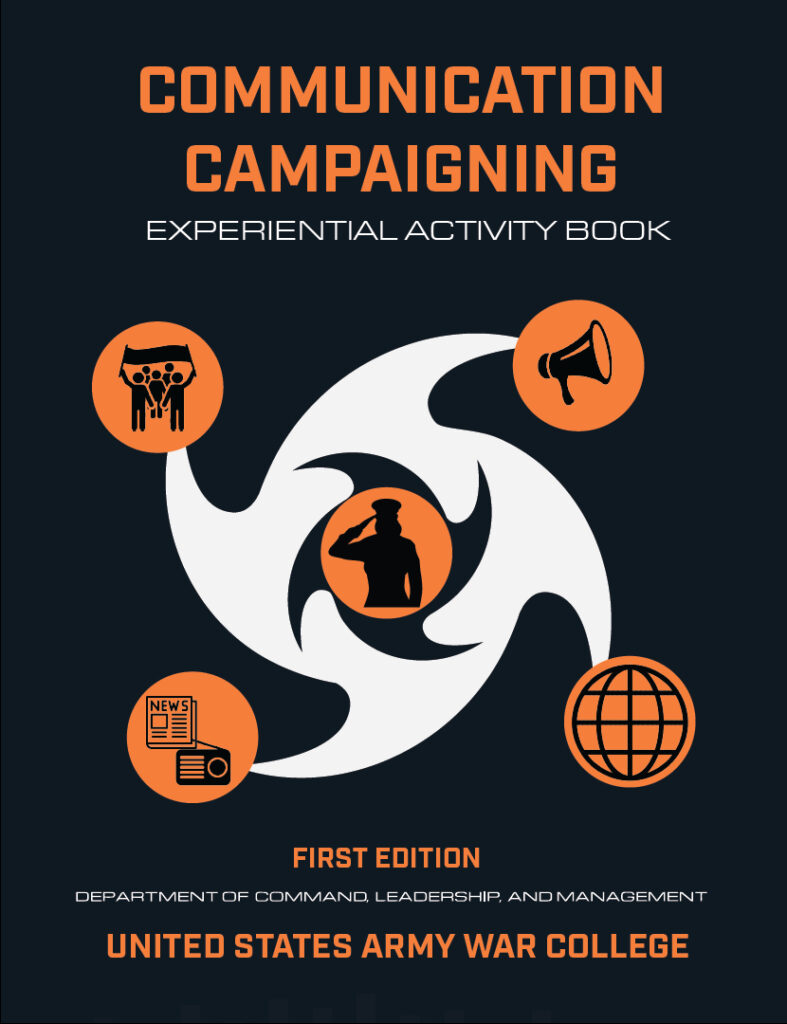
COMMUNICATION CAMPAIGNING: EXPERIENTIAL ACTIVITY BOOK (1st Edition)
The purpose of this Activity Book is to provide a series of experiential exercises that allow readers to construct communication campaigns as described in the monograph Communication Campaigning: Primer for Senior Leaders. This workbook is to be considered a living document that will be continuously updated, and therefore there may be differences between the activities herein and their presentation in the companion monograph. The intent is for the two texts to co-evolve over time through usage and feedback.
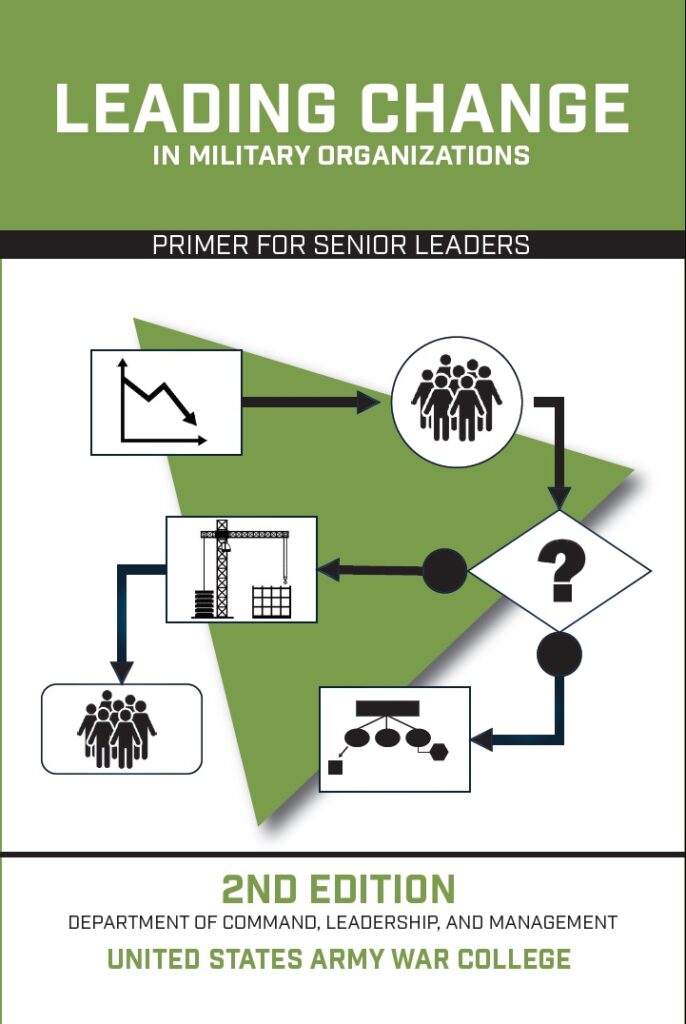
LEADING CHANGE IN MILITARY ORGANIZATIONS: PRIMER FOR SENIOR LEADERS (2nd Edition)
Making change happen is a popular topic among U.S. Army War College students and with good reason. There are endless problems to fix, procedures to improve, new ideas to introduce, and an ever-growing and evolving array of state and non-state actors chomping at the bit to challenge the U.S. Furthermore, systems and processes in use by the military rarely seem to bring about change at the desired speed.
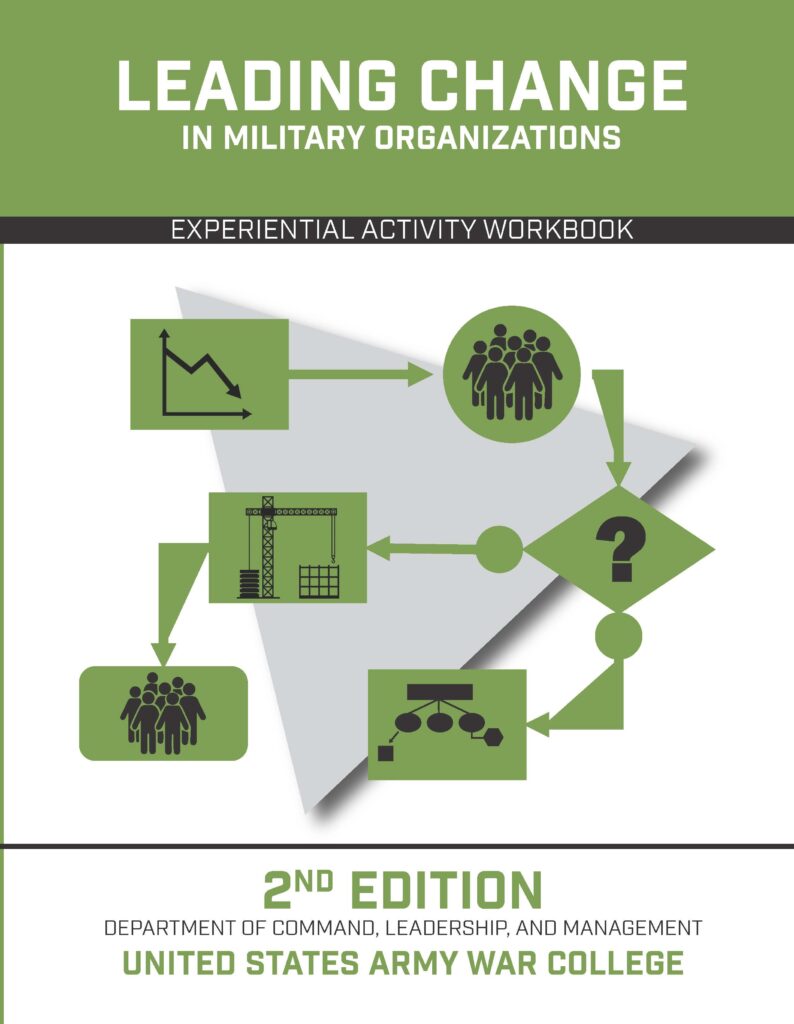
LEADING CHANGE IN MILITARY ORGANIZATIONS: EXPERIENTIAL ACTIVITY BOOK (2nd Edition)
This activity book provides a slate of activities and exercises that can be used in educational or leader development settings to help organizations understand the complexity and dynamics of leading change. It is experiential in that users of the activities should reflect on the questions posed and consider how they apply to their own organization. There is no silver bullet or one best way proposed, rather this is a set of tailorable tools drawn from organization and management studies that align with the unique challenges of implementing change in military organizations. This is the 2nd edition, released in October 2024, with the activities updated based on several years of use by both students and military practitioners.
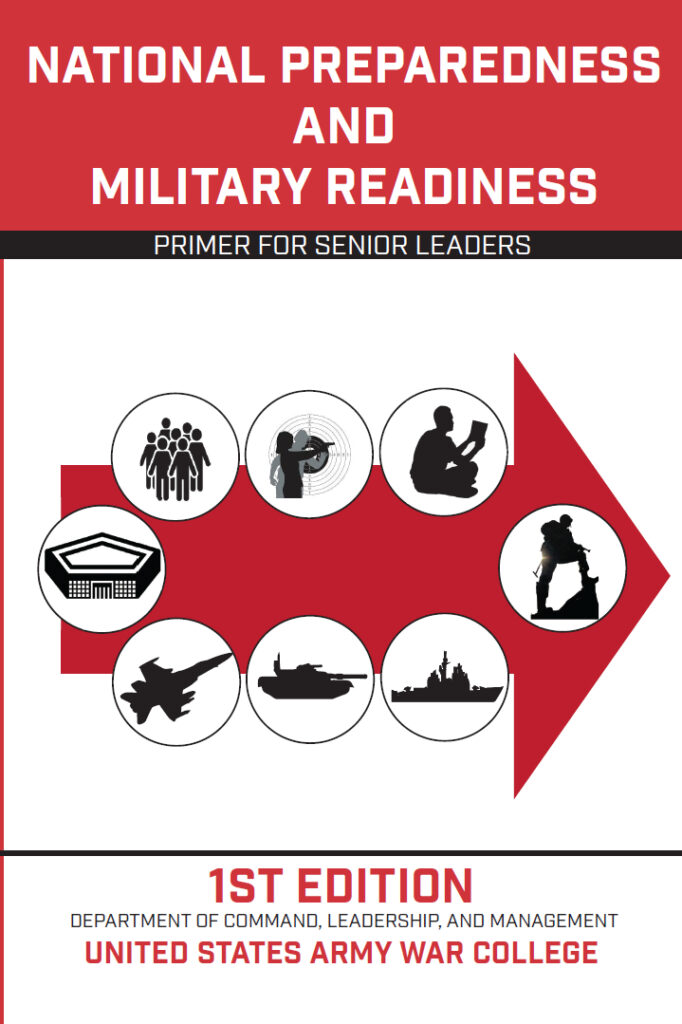
NATIONAL PREPAREDNESS AND MILITARY READINESS (1st Edition)
What will it take to win the next war? This is the question that should be first and foremost on the minds of military professionals. However, readiness means many things to many different people, and scholars have long debated how readiness should be measured and reported. Meanwhile, less attention is paid to what a nation must provide to its military in order to prosecute a war, such as legal authorities and resources. This monograph follows the pioneering work of Ken Betts (1995) and others in developing a comprehensive framework that examines all aspects of military readiness and national preparedness for war.

This white paper from the Carlisle Scholars Program (CSP) is one contribution to the USAWC’s overall effort to help the Army develop a campaign for strengthening a culture of warfighting that incorporates CSA priorities and messages that enhance the Army’s efforts to better prepare for future war. The white paper proposes a framework for unpacking the meaning of “culture of warfighting.” The collective experience of CSP instructors and students suggests that the various branches, components, and communities within the Army interpret the meaning of warfighting differently according to what capabilities each brings to the table. Also, barriers to building the desired culture emanate from across the Army, not just within operational units. Our proposal is that building a culture of warfighting begins by ensuring the total Army—active and reserve components, civilians (appropriated and non-appropriated), contractors, and family members—see themselves as part of the desired culture. The implication is that building and sustaining the desired culture will be best done through a powered-down campaign comprising a set of common central themes implemented in distribution fashion.
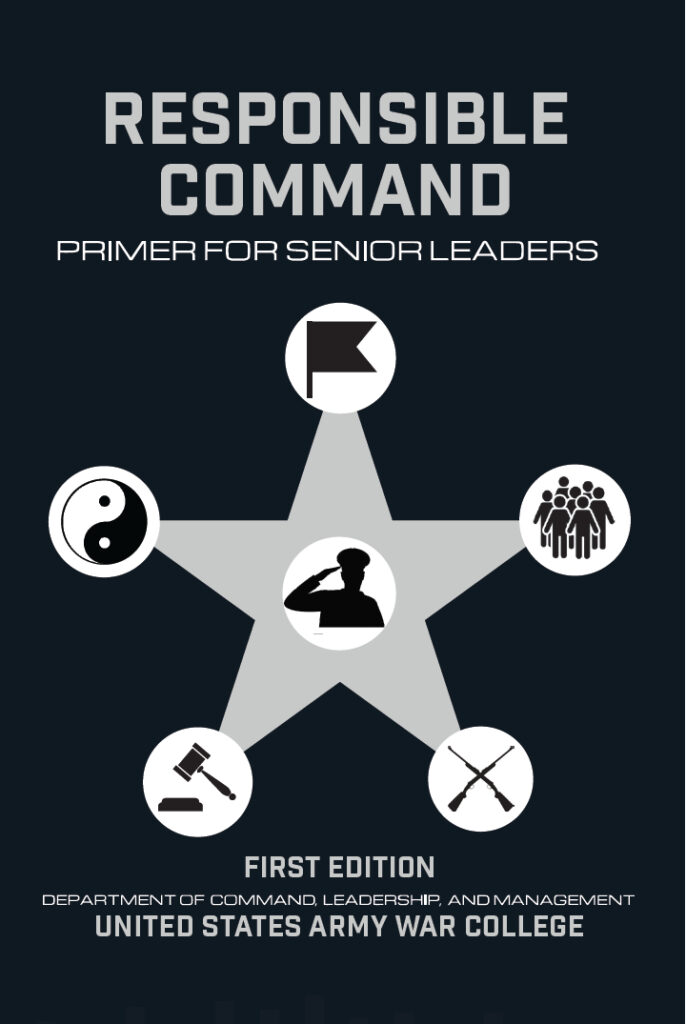
RESPONSIBLE COMMAND: PRIMER FOR SENIOR LEADERS (1st Edition)
The purpose of this primer is to stimulate thought about command in its own right. More than any other leadership book, it seeks to fill a gap between Colonel-level command and what lies beyond. It is a supplement and complement to other U.S. Army War College primers: Strategic Leadership, Defense Management, Leading Change in Military Organizations, and Communications Campaigning. It is distinguished from those primers as its focus is on the aspects of leadership that apply to command, not only including inherent legal obligations, but the responsibilities all commanders bear as the moral and ethical leader of their organizations. These important attributes are revealed through the use of historical examples and the observations of those who have taken on the tough jobs of command.
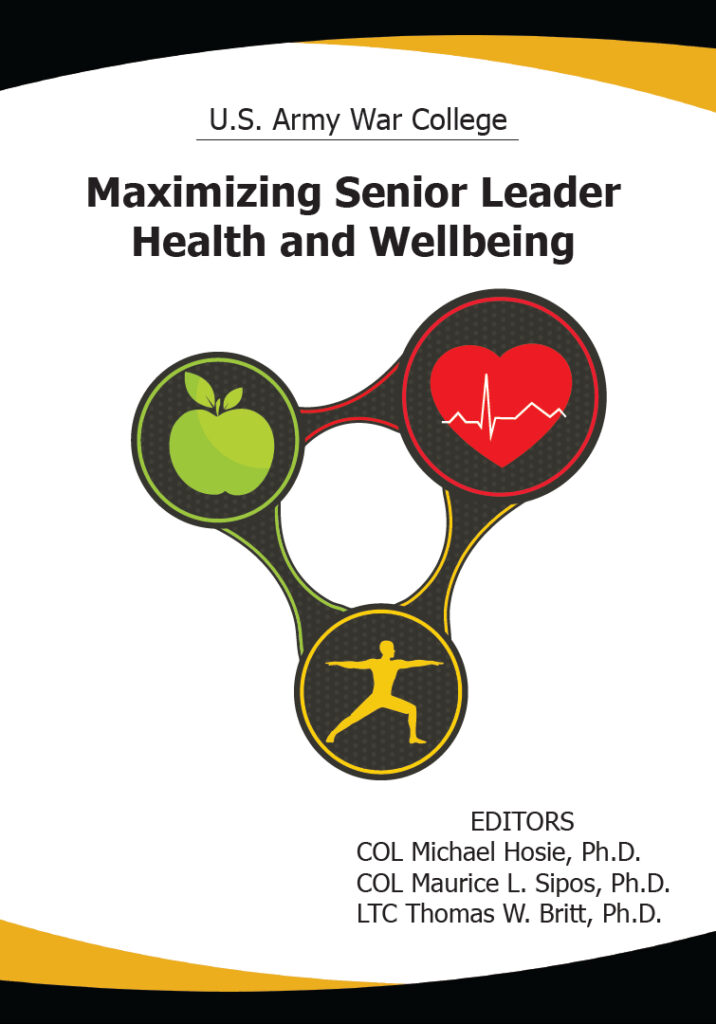
MAXIMIZING SENIOR LEADER HEALTH AND WELLBEING
Senior leaders face a challenging and dynamic environment that demands their full attention and optimal performance. This book provides a holistic look at wellness for senior leaders in midlife and provides recommendations to slow performance decline and increase vitality through exercise, nutrition, sleep, mindfulness, resilience, and the work-life interface.
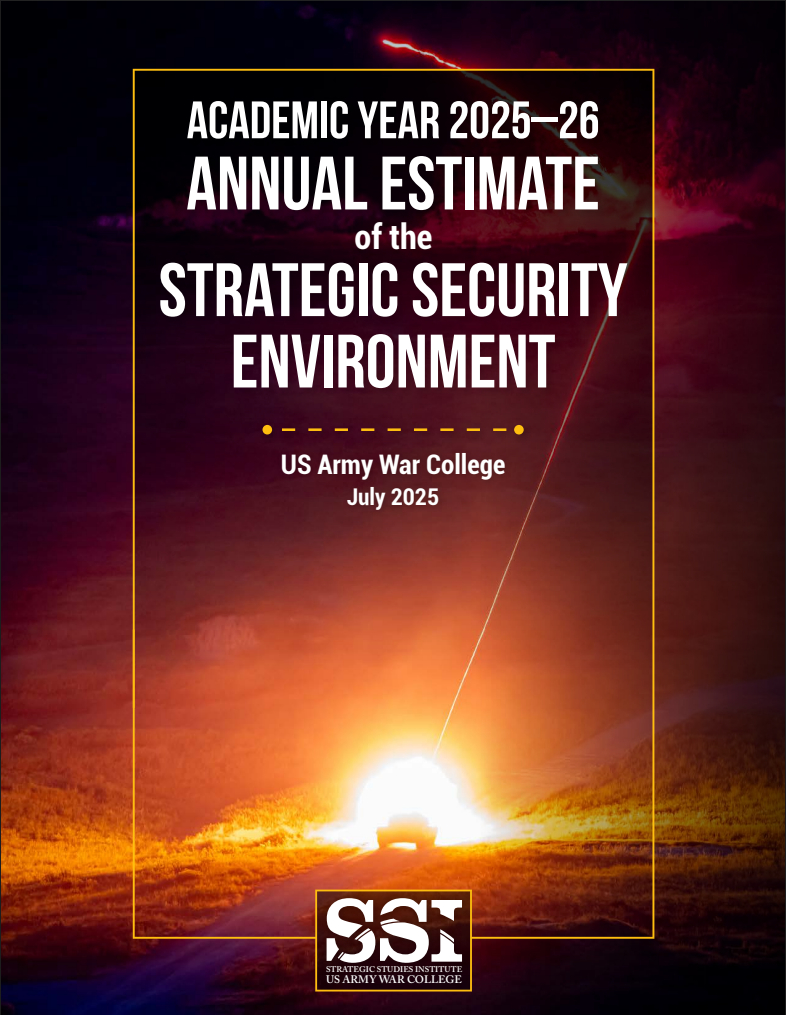
ACADEMIC YEAR 2025–26 ANNUAL ESTIMATE OF THE STRATEGIC SECURITY ENVIRONMENT
Maintaining strategic advantage demands professional discourse from across the force. The Academic Year 2025–26 Annual Estimate of the Strategic Security Environment provides a framework for those aspiring to tackle the Department of Defense’s most pressing challenges. This year’s authors highlight trending challenges and identify potential tension points across 15 sections organized into four enduring themes. This survey of regional, domestic, and institutional challenges represents the collective expertise of the US Army War College. The narrative is supplemented by a tailored list of 100 command-sponsored questions from 43 different Army and Joint organizations from across the Department of Defense. Combined, the distinct yet complementary narrative and question list offer unique insights into the vital matters impacting defense organizations and provide aspiring researchers with a necessary starting point.
